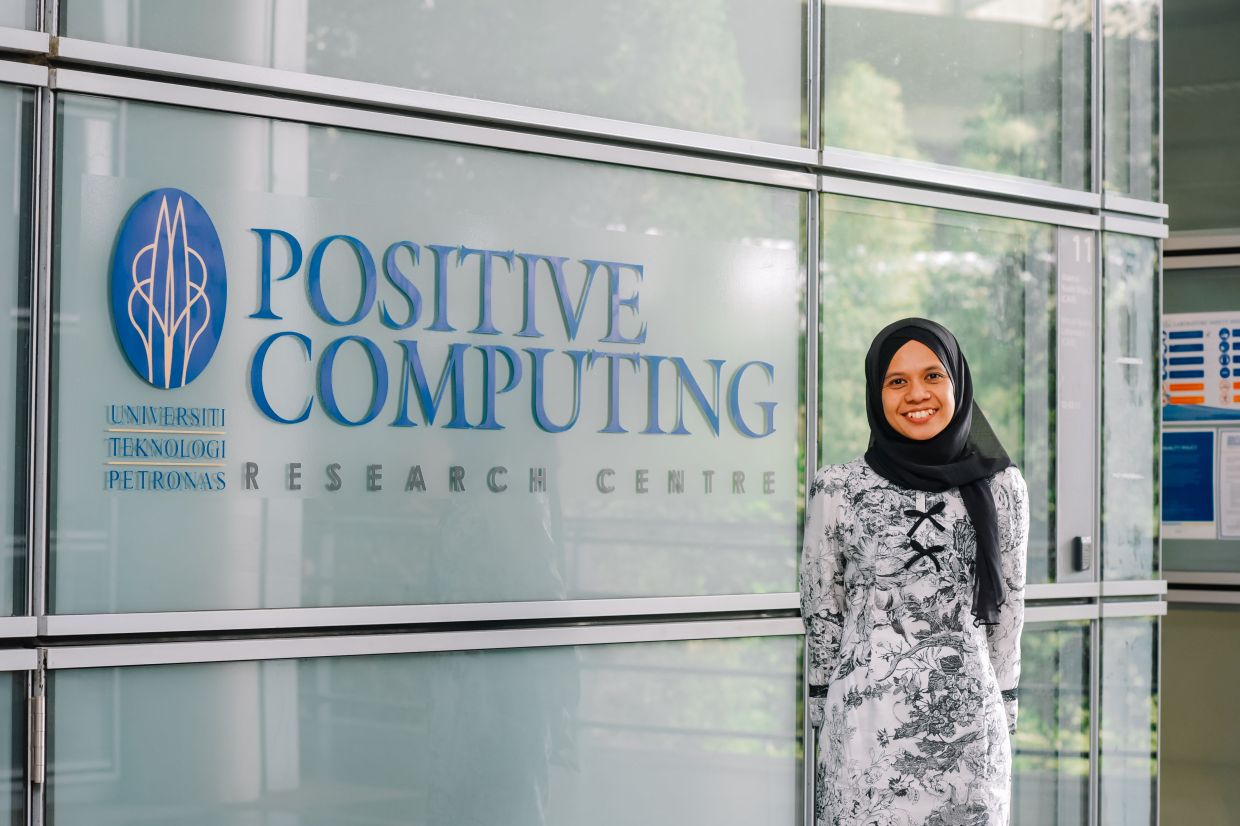Augmented reality gives interactive experience combining real world and computer-generated content.
IN the last three years, Assoc Prof Dr Noreen Izza Arshad and her team of researchers at the Positive Computing (+COMP) Research Centre in Universiti Teknologi Petronas (UTP) have been working closely with clients from various industries to deploy augmented reality (AR) and virtual reality (VR) technologies to take human capital development up a notch.
One of the research centres within UTP’s Institute of Autonomous Systems (IAS), +COMP explores the human side of Industry 4.0 technologies. It comprises a team of 11 core members and supported by researchers and postgraduate students.
Once synonymous in the world of video gaming, AR and VR are increasingly applied in education and corporate training, following the Covid-19 pandemic, which had brought in-person teaching and learning, as well as people development to a standstill. Today, the use of these technologies look set to stay, thanks to the many advantages offered.
“When the pandemic first hit, we were approached by various organisations to look at how AR and VR could be used for training,” Dr Noreen Izza shares.
“For example, technical training providers for the oil and gas industry were looking for ways engineers and technicians could continue learning about machinery and equipment without attending physical training sessions.
“So, we designed AR applications that showcased the machines from the internal components to the way they operate so that the engineer or technician could see the machine without it being there.”
UTP’s close ties with industry, forged over the last two decades, make it an ideal technology consultant and solutions provider.
“Business users share with us their pain points and challenges. We try to understand their issues and needs, then discuss and offer potential solutions, roping in experts from the client’s side as well as from the multidisciplinary team at the IAS,” she explains.
What makes UTP’s research consultancy stand out is the end-to-end nature of its services.
“We customise the solutions based on the client’s needs from the initial consultation to support and maintenance after the technology has been rolled out.
“We see it as a kind of smart partnership, from ‘how can we help you’ to ‘how best can we overcome the problem’ and ‘how can the technology be improved’. So, there is constant two-way communication taking place,” she adds.
During the pandemic, the team also consulted with a tourism agency in developing a 360-degree virtual walkthrough around Taman Herba in Gopeng, Perak.
“The idea was to allow children and adults to be able to visit the park during lockdown.
“We worked together with the agency and developed the virtual walkthrough as well as an educational tour that showcased the insects, plants, herbs, flora and fauna within the park. These were available on the web platform and were viewed by people all around the world.”
Although there is no doubt of the potential of AR and VR in promoting tourism, it is in the training and development segment that these technologies hold the most promise.
She says that one of the biggest benefits of using AR and VR for training is the higher learning retention rate.
“When training is delivered via virtual mode, the retention rate is higher than when one attends a conventional classroom session because of the immersive nature of the VR technology,” she elaborates.
VR head mounted displays, for instance, immerse the user completely in the virtual simulation world by shutting off the senses from the real world, so that the brain believes that the virtual world is real.
It’s been shown that in such instances the brain is switched on and neural connections needed for learning and memory are strengthened – enabling the user to gain and retain new knowledge.
Compared to conventional training methods, AR and VR technologies provide safe and cost-effective training alternatives.
“There is no longer a need to travel to remote or risky environments, and at the same time companies can save on travel time and costs that would otherwise be incurred in a conventional training approach,” she adds.
She believes that by 2026, AR and VR technologies will make up 5% of the training approaches used, up from the current 1%.
“The technology is already there and although it is expensive at the moment, in three to five years the market will see cheaper hardware that will facilitate the increase in the use of AR and VR,” she points out.
Worldwide statistics and projections on the AR and VR market trends point to an optimistic future; with the market value forecast at US$114.5mil by 2027. Increasing demand for VR devices and applications in the healthcare market, growth of VR head-mounted displays, that industrial and enterprise applications are increasingly leveraging VR technology for on-site advancements and digitisation, and the support of governments worldwide in the adoption of various new technologies are some of the factors driving the growth of AR and VR technologies.
Apart from AR and VR solutions, Dr Noreen Izza and her team have also developed a web platform which visualises the digital twin of an asset (for instance a pipeline) and the terrain around it. By capitalising on VR technologies as well as machine learning and predictive analytics, the digital twin platform can be used to visualise pipeline point of failures, predictive maintenance and improve decision making.
“There is a lot of potential in AR, VR and digital twins, and at the same time the technology is also evolving with holograms and the development of metaverse.
“The demand for AR and VR isn’t confined to training within the oil and gas setting. For instance, we’re also receiving interest from communication providers to explore the use of AR and VR for business pitching,” she adds.
For more information on AR and VR solutions and opportunities, email consultancy@utp.edu.my







